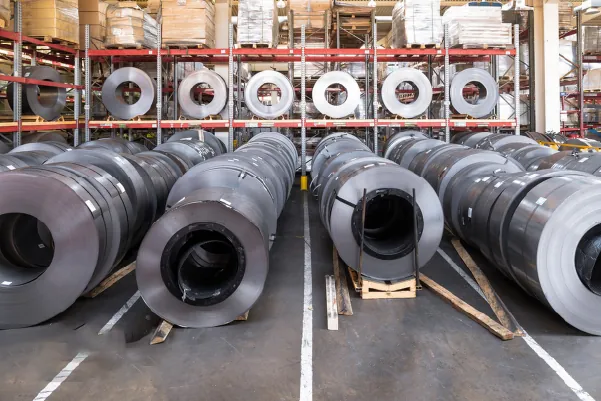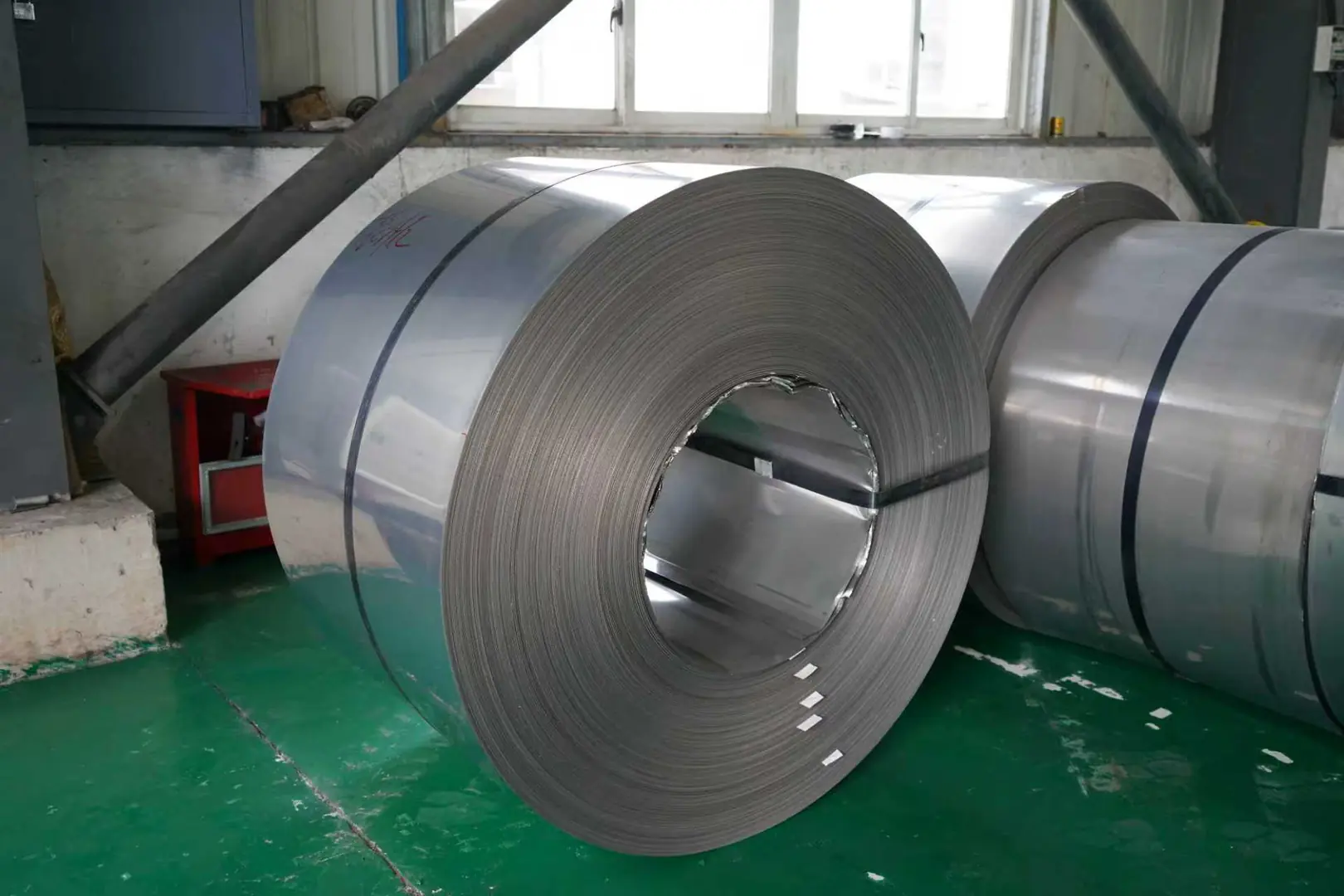The Essential Stainless Steel Coil Calculator for Procurement Managers
Struggling with inaccurate coil estimates? This guesswork wastes budget and creates project delays. A dedicated calculator provides the precision and efficiency your procurement process needs.
An essential stainless steel coil calculator transforms procurement by providing precise weight and length data. This enables managers to optimize purchasing, streamline logistics, control inventory, and make data-driven decisions, ultimately reducing costs and mitigating supply chain risks associated with market volatility.

As the Global Business Director at MFY, I've seen firsthand how small miscalculations can have massive financial consequences. The difference between a profitable project and a loss often comes down to the precision of your initial planning. That's why moving from estimation to calculation isn't just an upgrade—it's a fundamental shift in how we approach procurement. This tool is about more than just numbers; it's about gaining control and building a more resilient supply chain. Let's walk through how to master it, step by step.
What are the Basics of Stainless Steel Coil Calculations?
Dealing with complex formulas is daunting. Manual errors are common and can lead to costly ordering mistakes. Understanding the core inputs is the first step to ensuring accuracy.
The basics of stainless steel coil calculation revolve around three key variables: the coil's dimensions (Outer Diameter, Inner Diameter, Width), the material's specific density, and a standard mathematical formula to convert these inputs into a total weight or length.

To truly appreciate the calculator's power, it's helpful to understand the mechanics behind it. At MFY, we believe an informed partner is a better partner, so I always encourage our clients to grasp the fundamentals. It’s not about becoming a mathematician; it’s about understanding what drives the final number so you can trust the output and troubleshoot if something looks off. The calculator essentially automates a proven formula to determine a coil's weight, which is the primary metric for pricing and logistics.
Key Variables Explained
The accuracy of your result is entirely dependent on the quality of your input data. The main components are the physical dimensions of the coil itself. You need the Outer Diameter (OD), the Inner Diameter (ID), and the Width. These are typically provided in millimeters or inches on the supplier's specification sheet. The second critical component is the material's density. Different grades of stainless steel have slightly different densities, and using a generic value can introduce small but significant errors, especially on large orders.
The Core Formula
The most common formula used by these calculators to find the weight is a variation of this:
Weight (kg) = [(OD - ID) / 2] * Width * π * Density
More precise formulas will account for the coil being a spiral, but they all rely on the same core data. The calculator simply removes the risk of human error in the calculation.
| Переменная | Описание | Common Unit |
|---|---|---|
| Outer Diameter (OD) | The full diameter of the coil from edge to edge. | mm / inches |
| Inner Diameter (ID) | The diameter of the hollow center (the "eye"). | mm / inches |
| Ширина | The width of the steel strip itself. | mm / inches |
| Плотность | The mass per unit volume of the specific steel grade. | kg/m³ or lb/in³ |
How Do You Correctly Input Data into the Coil Calculator?
"Garbage in, garbage out" is a common saying for a reason. Inputting the wrong data will lead to incorrect orders, wasting time and money. A systematic input process is essential.
To correctly input data, you must use precise dimensions from the supplier's specification sheet for Outer Diameter, Inner Diameter, and Width. Crucially, you must also select the correct density value corresponding to the specific stainless steel grade (e.g., 304, 316L).

The practical application is where the tool proves its worth. A calculator is only as smart as the information it's given. I've seen procurement teams get excited about a new tool but fail to establish a standard process for data entry, leading to inconsistent results. The goal is to make the process repeatable and foolproof, ensuring that anyone on your team can arrive at the same, correct calculation every time. This standardization is key to leveraging the calculator for strategic advantage, as it builds a foundation of reliable data for all subsequent decisions.
Sourcing Accurate Dimensions
Always pull your OD, ID, and width figures directly from the official Manufacturer's Mill Test Certificate (MTC)[^1] or the supplier's detailed technical data sheet. Do not rely on estimates or numbers from a previous, similar-looking order. A few millimeters of difference can translate into many kilograms on a large coil. At MFY, we ensure our clients receive comprehensive data sheets with every quotation, so there is no ambiguity.
Material Density is Key
Never use a generic "stainless steel" density. The alloy composition of each grade affects its weight. Using the density for 304 when you're ordering 316L will throw off your calculation. A good calculator will have a dropdown menu with common grades, but it's wise to have a reference chart handy.
| Марка стали | Typical Density (kg/m³) | Примечания |
|---|---|---|
| 304 / 304L | ~8000 | The most common austenitic grade. |
| 316 / 316L | ~8000 | Higher corrosion resistance due to molybdenum. |
| 430 | ~7750 | A common ferritic, magnetic grade. |
| 201 | ~7860 | A lower-cost austenitic alternative. |
How Can You Analyze Calculator Results for Informed Decisions?
The calculator gives you numbers, but those numbers are meaningless without context. Misinterpreting the data can lead to poor logistical planning and budget overruns. You must use the results for strategic planning.
Analyze the results by using the calculated weight to verify supplier quotes, plan shipping and handling logistics based on crane capacity, and forecast inventory levels. This data directly informs cost-benefit analysis for different coil options and optimizes your entire supply chain.

This is where procurement moves from a tactical function to a strategic one. The calculator's output—primarily the total weight—is the starting point for a chain of critical business decisions. It's not just about confirming you're getting what you paid for. It's about using that data proactively to optimize every downstream process. When you can accurately predict the weight and length of every coil, you can plan your production runs with greater precision, minimize scrap, and manage your cash flow more effectively by not over-ordering. This synthesis of data, as highlighted in our initial insights, is what allows managers to enhance their strategic planning.
From Weight to Cost Analysis
The most immediate use is cost verification. Your supplier will quote you a price per kilogram or ton. With the calculated weight, you can instantly determine the total cost of the coil and compare quotes from different suppliers on an apples-to-apples basis. This allows you to assess not just the base price, but the total landed cost after factoring in logistics.
Optimizing Logistics and Storage
Knowing the precise weight is critical for logistics. It determines the type of truck or container needed, the lifting equipment required for unloading, and how the coil can be stored in your warehouse. Planning this in advance prevents costly delays and safety hazards. For example, you can group coils to maximize truckload capacity, significantly reducing freight costs per unit.
| Метрика | Coil Option A | Coil Option B | Анализ |
|---|---|---|---|
| Calculated Weight | 4,500 kg | 5,500 kg | Option B is heavier, requiring higher crane capacity. |
| Cost per Ton | $2,100 | $2,050 | Option B is cheaper per ton. |
| Total Cost | $9,450 | $11,275 | Option B has a higher upfront cost. |
| Shipping Units | Fits 5 coils/truck | Fits 4 coils/truck | Option A is more efficient for freight. |
What Common Mistakes Should You Avoid When Using the Calculator?
Even with a simple tool, mistakes can happen. These seemingly small errors can derail budgets and production schedules if they go unnoticed. Being aware of the common pitfalls is the best prevention.
The most common mistakes to avoid are unit mismatches (e.g., inputting millimeters instead of inches), using an incorrect density for the specific steel grade, and failing to account for the manufacturer's rolling tolerances, which can affect the final weight.

Over the years, I've seen a few recurring errors that are easily avoidable with a bit of diligence. I recall a client in Germany who was frustrated with a weight discrepancy on a large order of 430 grade coils. The issue was simple but costly: their procurement assistant had used the density for 304 grade steel. The difference was only about 3%, but on a 100-ton order, that's a 3-ton error. It’s these small details that a robust process can catch. This is a perfect example of how a simple tool, when used carelessly, can still create significant risk.
The Unit Conversion Trap
This is by far the most frequent error. The calculator requires inputs in either metric (mm, kg) or imperial (inches, lbs) units. If your supplier data sheet is in millimeters but your calculator is set to inches, the result will be wildly inaccurate. Always double-check the unit settings before you hit "calculate." A good practice is to standardize on one system (preferably metric, the global industry standard) across your entire procurement process.
Ignoring Manufacturing Tolerances
No manufacturing process is perfect. A steel mill will produce coils with a specified thickness and width, but there is always an accepted tolerance (e.g., +/- 0.05mm). While a calculator uses the nominal, or target, dimension, the actual weight could vary slightly. For standard procurement, this is often negligible. But for high-precision applications or very large orders, it's important to be aware of these potential variances and discuss them with your supplier.
| Error Type | Пример | Impact on a 5,000 kg Coil |
|---|---|---|
| Unit Mismatch | Inputting width as 1250 inches instead of mm | Calculation is off by thousands of percent. |
| Incorrect Density | Using 304 density (8000 kg/m³) for 430 (7750 kg/m³) | ~156 kg error (overestimation). |
| Ignoring Tolerance | Actual thickness is 0.5% over nominal | ~25 kg error (underestimation). |
How Can You Integrate the Calculator into Your Procurement Process?
A great tool is useless if it's not used consistently. Relying on old, manual processes is slow, prone to error, and leaves you at a competitive disadvantage. You must embed the calculator into your daily workflow.
Integrate the calculator by making it a mandatory step in your RFQ (Request for Quote) process. Embed it into your ERP or procurement software to pre-populate data, ensuring all supplier quotes are verified against a standardized, calculated weight before a purchase order is issued.

The final step is to operationalize this tool. It should become as routine as checking your email. At MFY, we are moving towards a digital-first supply chain, and we advise our partners to do the same. By integrating a coil calculator directly into your procurement systems, you create a single source of truth for weight and cost data. This removes ambiguity and empowers your team to act quickly and decisively. This integration fortifies your company’s resilience against market pressures because your decisions are consistently backed by accurate data, aligning with our core mission to drive efficiency in the global supply chain.
Standardizing the RFQ Process
Make the calculator a formal part of your procurement checklist. When you send out an RFQ for a specific coil dimension, use the calculator to establish a baseline expected weight. When quotes come back, you can immediately flag any supplier whose quoted weight deviates significantly from your calculated baseline. This serves as an instant quality check and a starting point for technical clarification with the supplier.
Enhancing Inventory Management
The integration extends beyond purchasing. The accurate weight data from the calculator can be fed directly into your inventory management system (IMS) or ERP. When a coil arrives, its actual weight can be checked against the calculated weight on the purchase order. This helps in maintaining accurate stock records, which is crucial for production planning and financial accounting. It also supports sustainability goals by enabling better planning to minimize scrap and waste from unused coil remnants.
| Procurement Step | Calculator Integration Point | Выгода |
|---|---|---|
| 1. RFQ Creation | Calculate baseline weight for required dimensions. | Set clear expectations and a benchmark for quotes. |
| 2. Quote Evaluation | Compare supplier's quoted weight to your calculated weight. | Instantly identify discrepancies and verify pricing. |
| 3. Purchase Order | Include the calculated weight on the PO as a reference. | Formalize the expected specifications. |
| 4. Goods Receiving | Weigh the delivered coil and compare it to the PO. | Ensure accuracy and improve inventory control. |
Заключение
This calculator is more than a convenience; it is an indispensable strategic asset. By embedding it into your workflow, you replace guesswork with data-driven precision, driving efficiency, mitigating risk, and building a more resilient and competitive procurement operation for the future.
У вас есть вопросы или нужна дополнительная информация?
Свяжитесь с нами, чтобы получить индивидуальную помощь и квалифицированный совет.








